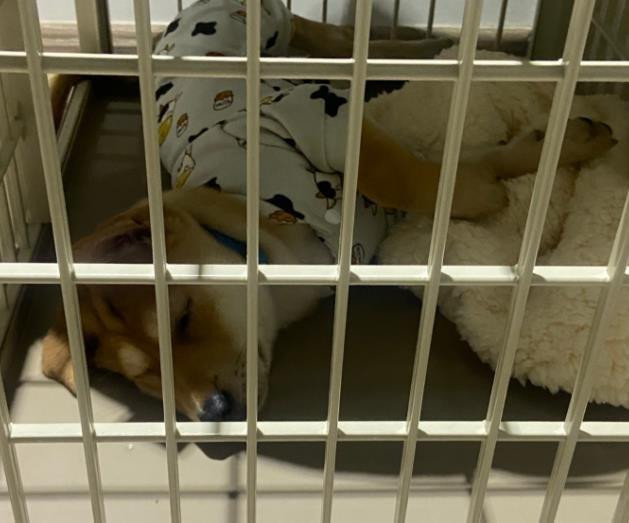Should My Dog Sleep in a Crate?
Whether or not your dog should sleep in a crate depends on several factors, including your dog’s age, temperament, and previous experiences, as well as your personal preferences and lifestyle. Here are some considerations to help you decide:

**Pros of Crating:**
1. **House Training**: Puppies and newly adopted adult dogs may benefit from crating because it can aid in house training. Dogs typically do not soil their sleeping area, so a crate can help establish a routine and reduce accidents in the house.
2. **Safety**: A crate provides a safe space for your dog to rest without the risk of them chewing on inappropriate items or ingesting something hazardous while unsupervised.
3. **Comfort Zone**: Some dogs enjoy having a den-like environment where they can retreat to feel secure. A crate can serve as a personal space for your dog to relax and escape from household activity.
4. **Travel**: If you travel with your dog, a crate can provide a familiar and safe place for them to stay, whether in a vehicle or at a destination.
5. **Management**: For dogs with destructive behaviors or separation anxiety, crating can be a management tool to protect your belongings and the dog itself when you cannot supervise them.
**Cons of Crating:**
1. **Improper Use**: Leaving a dog in a crate for too long or too frequently can lead to physical and emotional problems. Dogs need exercise, mental stimulation, and social interaction.
2. **Uncomfortable Associations**: If a crate is associated with punishment or discomfort, it can create negative feelings for the dog.
3. **Size Limitations**: A crate that is too small can be uncomfortable and even harmful to a dog. Conversely, a crate that is too large may not prevent a dog from eliminating in one corner while sleeping in another.
4. **Preference**: Some dogs simply do not like being confined and may show signs of distress or anxiety when placed in a crate.
**General Guidelines:**
– **Age**: Puppies under six months should not be crated for more than three or four hours at a time. Adult dogs should not be crated for more than eight hours.
– **Exercise**: Ensure your dog gets plenty of exercise and mental stimulation before and after being crated.
– **Training**: Introduce the crate gradually and positively, associating it with good things like treats and toys.
– **Monitoring**: Observe your dog’s behavior in the crate to ensure they are comfortable and not showing signs of distress.
Ultimately, the decision to crate your dog at night should be based on what is best for your individual dog and your living situation. If you choose to crate, it should always be done humanely and with consideration for your dog’s well-being. If you have concerns or questions, consult with a veterinarian or a professional dog trainer for personalized advice.
https://petdogsathome.com/should-my-dog-sleep-in-a-crate.html
